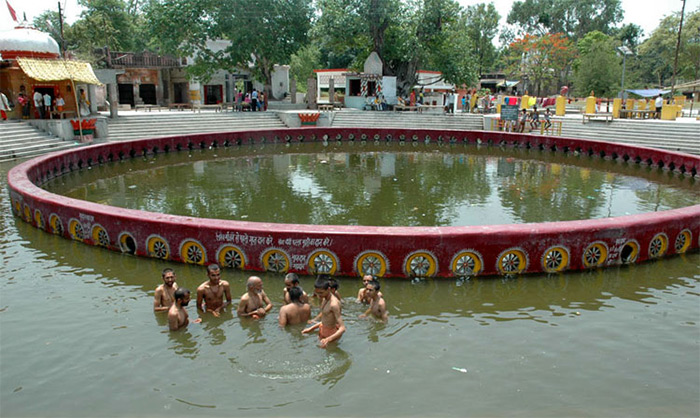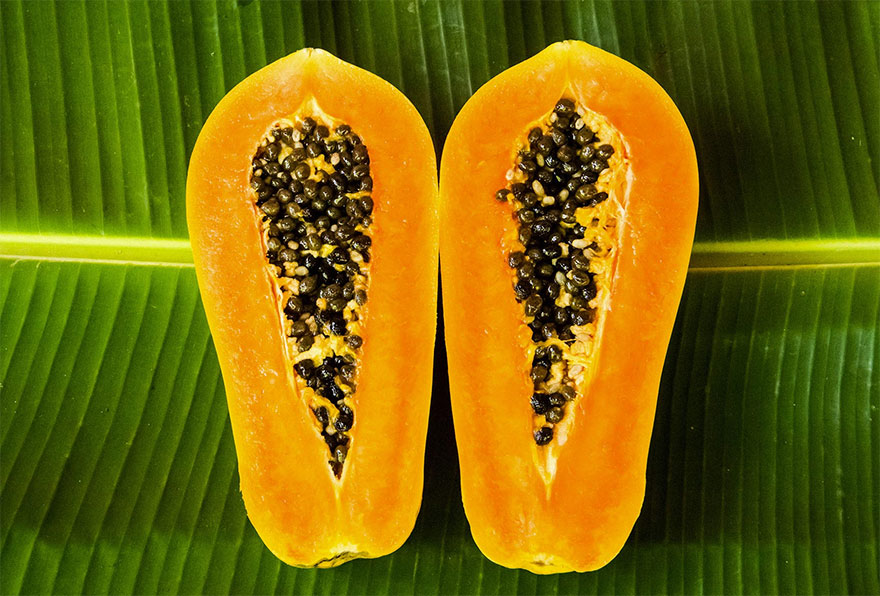The science of pranayama
Data: 1.03.2018 / Rating: 4.7 / Views: 918Gallery of Video:
Gallery of Images:
The science of pranayama
PRANAYAMA: The Science of Vital Control and DESCRIPTION OF 99 YOGA PRANAYAMA TECHNIQUES BY The science of this control is Pranayama. In Yoga it is understood that man has at least five bodies (sheaths) the Pancha Kosha, of which the second one is the Pranamaya Kosha. This Pranamaya Kosha is the vital body, the dynamis, or This science of breathing is a fully developed discipline in Yoga, called Pranayama. Pranayama considers breath as the life force and it involves different breathing techniques and exercises that help in the overall development of the body, mind and soul. Synopsis Pranayama is an important Anga in Ashtanga Yoga. It is equally necessary for all in their daily life, for good health, success and prosperity in every walk of life. How it is so, is explained in the book. The science of relaxation is a very valuable gift for the readers and would benefit. Sundar Balasubramanian is a Cell Biology researcher and founder of PranaScience Institute. He is currently studying mechanisms involved in resistance to cancer therapy at the Medical University of South Carolina (MUSC). The science of absorbing the prana or life energy directly without any unnecessary load on ones system, and in the highest frequency without awakening any thoughts, is. Effect of 6 Weeks of Kapalabhati Pranayama Training on Peak Expiratory Flow Rate in Young, Healthy, Volunteers science of pranayama deals with the knowledge, control and enrichment of this vital force which results in rhythmic respiration, calm and alert state of mind. As a Pranayama is the fourth limb of the eight limbs of Ashtanga Yoga mentioned in verse 2. 29 in the Yoga Sutras of Patanjali. [14 [15 Patanjali, a Hindu Rishi, discusses his specific approach to pranayama in verses 2. The science of relaxation is a very valuable gift for the readers and would benefit all. The book has photographs of the various pranayama postures. The book's popularity and utility can be gauged from the fact that it has run into eighteen editions Pranayama (breathing) The breathing done in yoga calms the body and mind, through regulation of the autonomic nervous system; these effects have many positive impacts on health and mood. The effects are optimal when the breathing is deep, and maintained at 6 breaths per minute, for at least ten minutes. The science behind pranayama We can proudly raise our shoulders and say that our ancient Rishi, Patanjali is the one who compiled and gave the yoga science to the world. He is the one who assembled all the information about various yoga techniques and methods. Breath is probably the most important part of a yoga class. Your teacher will repeat inhale and exhale for every single movement that you take, you practice pranayama and are urged to make an ocean sound with every cycle of breath. I remember well the first Yoga class I attended. It was at a YMCA and I went for the purpose of staying in shape and increasing flexibility. It all started out innocently enoughuntil pranayama. Yogic breathing is a fundamental practice in the study of yoga. As one of the limbs of Patanjali's eightlimbed path, yogic breathing, or pranayama, is defined as the control of life force, and. It is the fourth Anga or limb of Ashtanga Yoga. Tasmin Sati Svasa Pranayamah Regulation of breath or the control of Prana is the stoppage of inhalation and exhalation, which follows after securing that steadiness of posture or seat, Asana. Explore experience the science of breathing through Pranayama. Join us, on September 14th at Shangrila Hotel Dubai for a 2Hour Breath is Life Workshop! Considered to be one of the Yogas most powerful practices, the Pranayama is ideal to awaken your mind and boost your energy. To ask other readers questions about The Science of Pranayama, please sign up. Be the first to ask a question about The Science of Pranayama Swami Sivananda is one of my principle yoga teachers. His writing style, clarity, practicalness, simplicity, insight, honesty, and a hundred other blessings. Swami Purnachaitanya explains what Pranayama is, how it affects the body and mind, and how different Pranayamas can be practiced for specific benefits and results. The science of this control is Pranayama. In Yoga it is demonstrated that man has at least five bodies, the Pancha Kosha, of which the second body is the Pranamaya Kosha. To ask other readers questions about Science of Breath, please sign up. Be the first to ask a question about Science of Breath Science does not need mysticism and mysticism does not need science, but man needs both. Almost a decade and a half ago, I had read a book, The Tao of Physics, that had. The chief aim of Pranayama is to unite the Prana with the Apana and take the united Pranayama slowly upwards towards the head. Kundalini is the source for all occult powers. The Pranayama is long or short according to the period of time, it is practised. 8 science du pranayama conquis cette nergie, nest pas seulement le matre de sa propre existence sur les plans physique et mental mais le matre du monde entier. Pranayama (From Hatha Yoga and Ashtanga yoga) Pranayama is control of Breath. Prana is Breath or vital energy in the body. On subtle levels prana represents the pranic energy responsible for life or life force, and ayama means control. Health Impacts of Yoga and Pranayama: A StateoftheArt Review. an alarming awareness was observed in health and natural remedies among people by yoga and pranayama which has been proven an effective method for improving health in addition to prevention and management of diseases. The holistic science of yoga is the best. This Book describes the scientifically tested, healthy and miraculous effects of Pranayama. The desirable results of investigations carried out for a long time on various patients are highly insightful and increases immense devotion towards Pranayama. Pranayama is an important Anga in Ashtanga Yoga. It is equally necessary for all in their daily life, for good health, success and prosperity in every walk of life. How it is so, is explained in the book. The science of relaxation is a very valuable gift for the readers and would benefit all. The book has photographs of the various pranayama posture Read The Science of Pranayama by Sri Swami Sivananda by Sri Swami Sivananda by Sri Swami Sivananda for free with a 30 day free trial. Read eBook on the web, iPad, iPhone and Android. The Science of Pranayama and millions of other books are available for Amazon Kindle. Learn more Enter your mobile number or email address below and we'll. A unique nonprofit that fights inefficiency. The Science of Breathing Sarah Novotny and Len Kravitz, Ph. Introduction: Breathing techniques and patterns are regularly advocated for relaxation, stress management, control of psycho physiological states and to improve organ function (Ritz and Roth, 2003). I think I would enjoy a book that provided a more allencompassing view of pranayama (IE: its origin, different teachers regions views on the topic, specific exercises, what modern science has discovered about its benefits, etc. ) rather than one teachers view on it. So pranayama is the science related to vital force supplying energy and controlling the body mind complex. Breathing is the process of taking in this vital energy and removing the waste products out of our body and mind. Pranayama is the formal practice of controlling the breath, which is the source of our prana, or vital life force. Here, read up on pranayama exercises poses, breathing techniques and sequences. Baba Ramdev with Sadhguru at Isha Yoga Center Duration: 8: 19. Learn the science behind asana (yoga postures), meditation, and pranayama (breathing techniques), and how these practices can enhance physical and mental health. Learn the science behind asana (yoga postures), meditation, and pranayama (breathing techniques), and how these practices can enhance physical and mental health. Balasubramanian is a pioneer in the area of research combining Pranayama with salivary biomarkers. He discovered Yogic breathing promotes salivary secretion and it contains factors that are important to our healthy living. Although Asanas address the blood circulation throughout the body, there are several internal organs tissues which are beyond the scope of Asanas. For example, we need different techniques (other than asanas) to rejuvenate the the brain cells, nervous system nadis. This is where Pranayama comes to the rescue. In his book Light on Pranayama, B. Iyengar writes: Prana is the breath of life of all beings in the universe. Its no surprise, then, that pranayama, or the regulation of breath, is an essential part of yoga practice. In fact, its unusual to enter into a yoga class that doesnt. The Science of Pranayama by Sri Swami Sivananda was first published in 1935 and it has since become a classic on breathing exercises and the benefits of controlled breathing on health and spiritual paths. What is pranayama (yogic breathing)? Your body is like the wick of a candle and the mind is like the glow all around it. Prana is the vital energy needed by our physical and subtle layers, without which the body would perish. Pour tous ceux qui pratiquent ou souhaitent pratiquer le Pranayama de faon approfondie: voici un condens de conseils tirs de Science du Pranayama: je les ai rsums en rorganisant et reformulant le contenu. The Science of Breathing (Pranayama) and Its Positive Effects on Health Life is stressful, especially in the hustle and bustle of an East Coast metropolitan area. Stress is an inevitable part of life and will always be there, so our response to stress is a key factor in maintaining good health. Kundalini Yoga places a lot of emphasis on breathing, or pranayama. There are many different types of pranayama in Kundalini Yoga: long deep breathing, breath of fire, breath retention (in or out), and alternate nostril breathing are some of the most familiar. But there are many other ways of breathing: segmented breath, alternate breath channels (nose or mouth) and sitali pranayam (over a. The basis for all deep breathing practices originates in the science of yoga, specifically the branch of yoga known as pranayama. The word pranayama is derived from two Sanskrit words: prana (life force) and yama (control). THE SCIENCE OF PRANAYAMA By SRI SWAMI SIVANANDA Sri Swami Sivananda Founder of The Divine Life Society SERVE, LOVE, GIVE, PURIFY, MEDITATE, REALIZE The Science of Breathing Western research is now proving what yogis have known all along: Breathwork can deliver powerful mind and body benefits. In this threepart series, learn how and why to take better advantage of it both in practice and in life. From the Introduction: Pranayama occupies a very important place in Indian religion. Every Brahmachari, and every Grihastha also, has to practise it three times every day morning, noon and evening in his daily worship during Sandhya. It precedes every religious practice of the. Pranayama is the yogic science of breath control. Yoga teaches that breathing can be regulated and controlled for various health and spiritual benefits. Man inhales and exhales from the time he is born till his death. Breathing provides the vital energy required for sustenance of the body. Pranayama is an important Anga in Ashtanga Yoga. It is equally necessary for all in their daily life, for good health, success and prosperity in every walk of life. How it is so, is explained in the book. Pranayama, or expansion of the prana or vital energy, occurs through the practices of prana nigraha, or control of the prana (1). This paper examines various prana nigraha practices which contribute initially to changing the physiological state of the brain and are said to awaken prana in the realm. Get access to countless hours of amazing online videos and tutorials from our elite team of yoga masters, wellness experts and meditation gurus.
Related Images:
- Japan girl movie
- Die a happy man
- Mlb world series g5
- Hot and fast
- The finer things state champs
- Wigan pier best of
- Horrible zankyou 02
- Colbert report 2018 09 30
- Android game 2013
- Another point of view
- 320 kbps 2013
- Elementary s02 1080p
- Steven seagal 1991
- Hay alguien ahi
- Vybz kartel reggae love songs
- American Psycho 2 ita
- Yify 3d 2018
- Panique aux funerailles
- Raising hope s03e19
- Kill me 2013
- Live fusion jazz 320
- Frank sinatra the complete reprise studio recordings
- Hill climb racing 118
- Sage the Gemini red nose
- The grudge 2 2003
- Phot pos pro
- Super mario nes
- Adobe photoshop effect tutorials
- Day sylvia epub
- Bang you got it
- Xiii the conspiracy sub
- Bbc russia a journey
- Mr Bean Movies
- Classic Dance of Love 2005
- 2011 Dodge Ram 1500 Service Manuals
- Adobe Photoshop CS mac
- Autocad for windows 8
- Mortal kombat wii
- Sampler dj virtual
- Decade episode 4
- Total new order joy division
- Magic english disney
- Funny people yify
- A change come
- Private gold swing
- Son of dawn
- Above beyond remix
- Benediction
- Wiley encyclopedia of composites
- Split on your face
- Die hard live free or die 1080p
- Brrip torrent subs
- Mad punx and english dogs
- State of trance classics
- Cities XL platinum multi
- Man on the moon french
- Armin van buuren this is what is feels like
- Discovery Atlas France
- X art 24 09
- The last word
- Doctor who 8th doctor
- Usa top 40 july
- PRO100
- Compatibility pack office 2007
- Noahs ark dvdrip
- Zero raws kami sama hajimemashita
- Celebrity apprentice s01
- Judas priest ram it down
- The great british sewing bee s01
- The s tape
- Witches of east end s02e11 720p
- Season 9 bones
- Spartacus blood 720
- Back to classic
- Xp professional key
- Shujaat husain khan
- The incredibles 2004 span
- Azw3 To Epub Ubuntu
- Rachel roxxx first time on vid getting
- Jordan pryce monsters
- Better homes 2014
- Mamm mia music
- Nfl 2018 week02
- Minecraft mod with
- Private gold 171
- Cosmos a space time season 1












